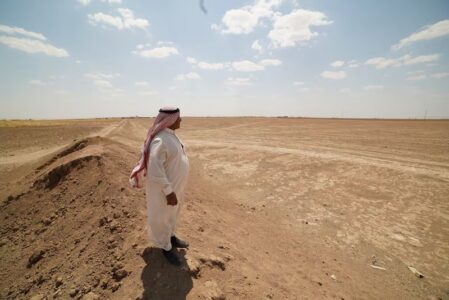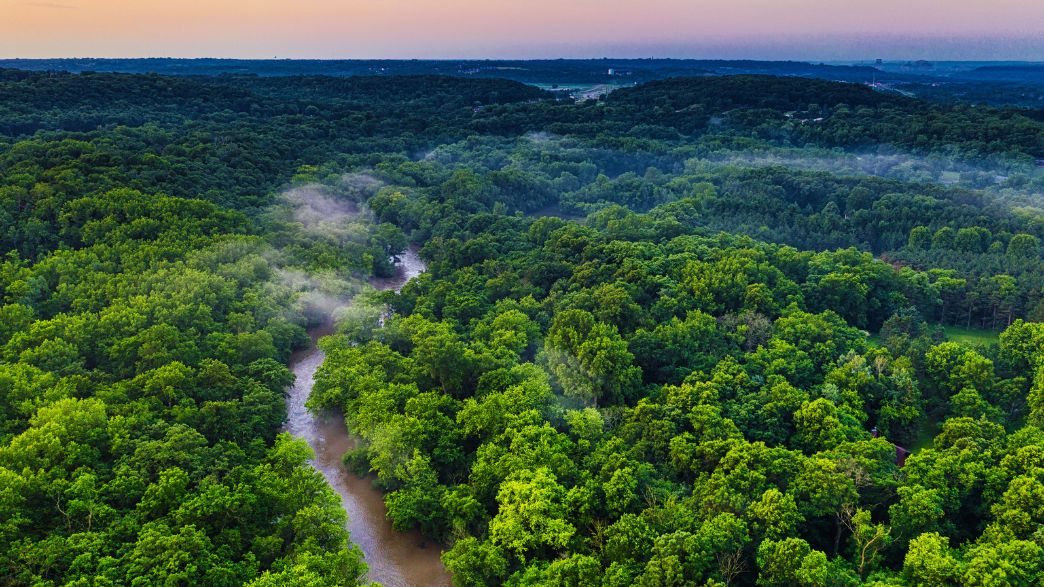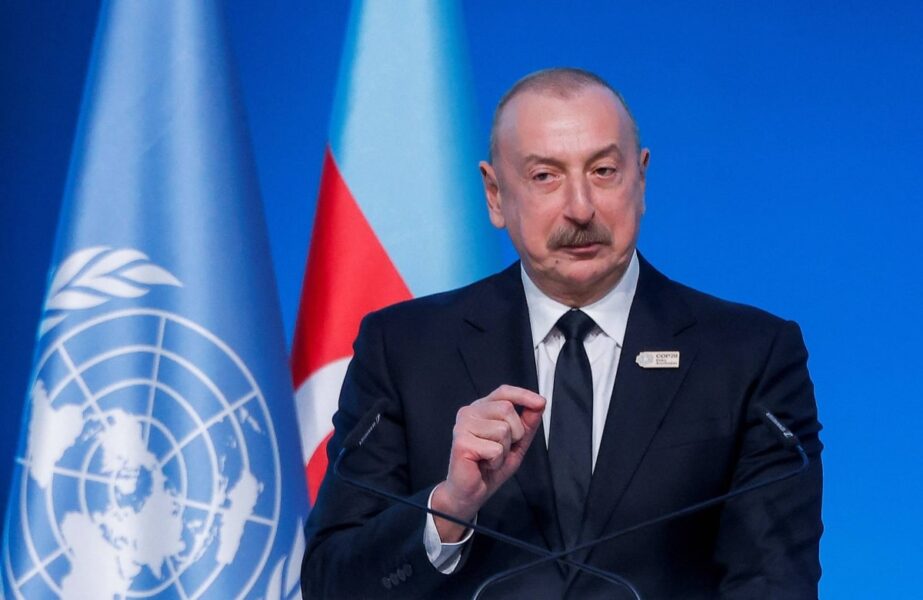Iraq launched an ambitious strategy on Wednesday to protect and improve its environment over the next six years, in the war-scarred nation’s latest bid to confront escalating environmental challenges.
The National Strategy for the Protection and Improvement of the Environment outlines steps to safeguard the country’s fragile environment and address the impact of climate change, pollution and resource depletion. The comprehensive road map covering 2024 to 2030 was introduced by the Ministry of Environment, the UN Development Programme and USAID.
“We in Iraq face huge environmental challenges as a result of wars and the security and political deterioration the country went through, and kept the environment away from the priorities of the successes governments,” Minister of Environment Nizar Amidi told the conference to announce the strategy.
Mr Amidi described the plan as an “important document for Iraq which organises the environmental work in the country, enhances efforts to protect and support environmental development projects and diversifies the economy”.
He added: “The time has come for the real work, and we are confident that implementing this strategy on the ground will represent an important path towards a sustainable environment for the coming generations.”
Iraq’s natural environment, once known for its two rivers, the Tigris and Euphrates, fertile Mesopotamian plains and vast marshes, is under threat. Over recent decades it has faced challenges including water shortages, desertification and severe pollution.
The strategy aims to reverse the damage caused by decades of war, mismanagement and environmental neglect. It sets out bold targets to improve air and water quality, preserve biodiversity and mitigate the impact of climate change, with particular emphasis on sustainable development.
The strategy, spanning almost 200 pages, includes some alarming statistics. Land affected by desertification increased from 26.8 million dunams (26,800 square kilometres) in 2018 to 27.3 million dunams in 2020. Similarly, land threatened with desertification grew from 93.7 million to 94.3 million dunams in the same period.
Water scarcity, exacerbated by upstream dam construction in Turkey and Iran and mismanagement, continues to pose a serious threat, particularly to the country’s iconic marshlands, which decreased from between 15,000 and 20,000 square kilometres to fewer than 2,000 square kilometres of the Central Marshlands, the Hummar Marshland and Al Hawiza. Their transformation into dry land has resulted in most of the inhabitants leaving.
The most common method of disposing of municipal waste is in landfill sites which do not have environmental approval. Only 28 per cent of landfill sites are approved. The strategy says available data indicates that the industrial sector greatly contributes to air pollution, while also noting the shortage of data due to the lack of equipment to measure air pollutants.
The strategy focuses on five core areas: environmental protection and sustainability, climate change adaptation and mitigation, partnership development, public awareness and education, and institutional strengthening and governance. It sets 28 strategic goals.
Over the past two decades, Iraq approved several plans to address climate change and environmental issues, but all stumbled due to lack of funds, political wrangling and security challenges. Iraq is ranked fifth on a list of countries most vulnerable to global warming, according to the UN.

This strategy’s success will not only depend on effective co-ordination across government ministries, civil society and international organisations, but also on adequate funds from the government, said Auke Lootsma, the UN Development Programme’s Iraq resident representative.
“This strategy is not only a question of writing it on paper, but also putting the commitment, a political will and also the financial resources behind it,” Mr Lootsma told The National.
“I think it’s really important for the government, first and foremost, to do so in the budget allocation process,” he added, saying that will encourage international donors to contribute to it technically and financially.
Nadheer Abood Fazaa, technical adviser to the Ministry of Environment, refused to comment on how much money Iraq can set aside for the strategy. However, he said the government approved projects in various sectors with environmental targets in the 2023-2025 federal budget worth between $7 billion and $8 billion.
“Is that enough? Not enough,” Mr Fazaa told The National. “We are also open to all climate-related funds such as the Green Climate Fund.”
Mamunur Rashid, portfolio manager of climate change at UNDP Iraq, told The National that Iraq needs a total of more than $5 billion a year for climate change and the environment, with a “very immediate and urgent minimum” of $1 billion per year needed just for the new strategy.
Mr Lootsma encouraged the Iraqi government to act swiftly. “We all see the impact of climate change globally, but also on Iraq; you only need to walk to the river Tigris to know what’s happening,” he said. “So, it is definitely true that the time horizon is getting shorter and shorter and action is required now.”



